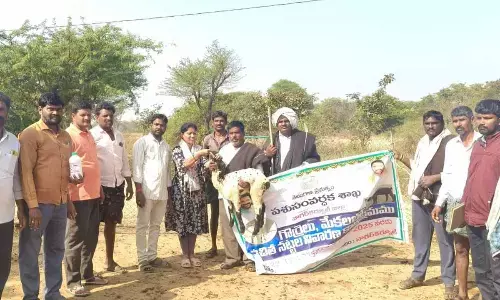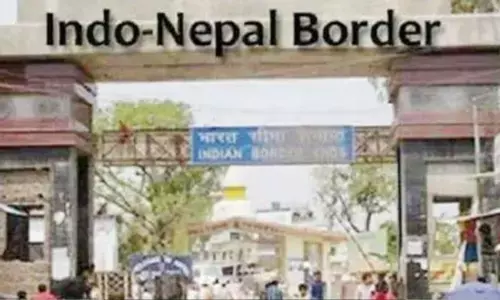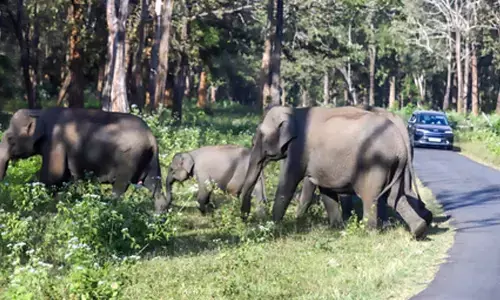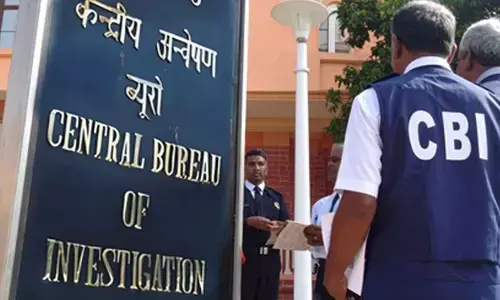History Beckons
 An aerial view of Anegundi
An aerial view of AnegundiI first heard of Anegundi a few years back when an acquaintance mentioned a temple complex that could be reached only via a boat or coracle ride. Intrigued I did some research and found out that he was talking of the sacred Navabrindavana. But what struck me about this place was its tryst with the Ramayana, believed to be the kingdom of Kishkinda making it one of the oldest places on earth. The first capital of the Vijayanagara empire, Anegundi translates to elephant pit and is said to be the place for bathing the elephants at that time.
Temple Trail
One of the must-see places at Aanegundi is the Navabrindavana which is a set of nine monuments of saints of the Madhwa sect. The name itself comes from nava (nine) and brindavana (tomb) in Kannada. Accessible by boat this is an island on the Tungabhadra river. The nine holy saints of Madhwa philosophy whose tombs are here include Shree Padmanabha Teertharu, Shree Jaya Teertharu, Shree Kaveendra Teertharu, Shree Vageesha Teertharu, Shree Govinda Vodeyar, Shree Vyasa Teertharu, Shree Sudheendra Teertharu, Shree Srinivasa Teertharu and Shree Rama Teertharu. The island also has small temples of Lord Hanuman and Lord Venkateshwara temple. According to legend, Prahalada, the son of king Hiranyakashipu spent hours meditating in a cave here to help him get rid of the burden of having his father killed by Lord Narasimha. It is believed that Lord Rama and Lord Lakshmana also payed their obeisance here when they passed through the river in search of Goddess Sita. The main idol here is a combination of main idol in the temple is a combination of Lord Hanuman, Lord Bheema and Sri Madhwa and is a said to be the only one of its kind and was installed by Sri Vyasa Theetra. You can also take a coracle ride to the island and the entire place is calm and serene.
Kishkinda Cues
Being the birth place of Lord Hanuman, a place that you must visit, preferably prior to sunset is Anjanadri Hill. However, be prepared to climb 575 steps to reach the top from where you can witness one of the most amazing sunsets. Incidentally, this is a place that is renowned for its sunset views. Atop the hillock you will see a temple dedicated to Anjanadri, the mother of Hanuman. Small idols of Lord Rama and Goddess Sita are also seen in this temple. The place itself has several monkeys so avoid carrying any food packets with you. This place does tend to get quite crowded around sunset so it is a good idea to come up a little ahead of time so you can get a vantage point to shoot some Instagram worthy pictures of the stunning landscape.
Local Enterprise
One of the most interesting things you will see here is the work of The Kishkinda Trust (TKT) Banana Fibre Cottage Industry. This is a place which is providing employment to the women of the village through the cottage industry that manufactures products made of locally-grown banana fibre. Started in 1998 by Shama Pawar, the center employs hundreds of women who craft bags, baskets, handmade paper, mats, hats, ornamental boxes, picture frames and more from pulped banana fibre. There are a few 100 women now who work with their hands crafting these beautiful products that are retailed across the country and also exported. The money you spend here not just helps the women run their homes better but also is partly ploughed back into the foundation so you know this is money well spent. I also suggest you explore the town on foot as you will discover many vestiges of the past. This is a town where there is religious camaraderie on full display as the Muslim and Hindu population coexist peacefully. The next time you are in Hampi, take a detour to Anegundi, it is a nostalgic trip down memory lane that will add more meaning to your trip to a place that can teach you a lesson in spirituality, ecology and culture.
The Kishkinda Trust (TKT) provides employment to the women of the village through the cottage industry that manufactures products made of locally-grown banana fibre




















